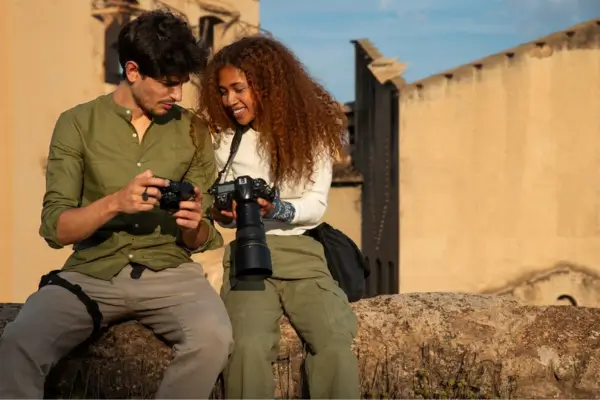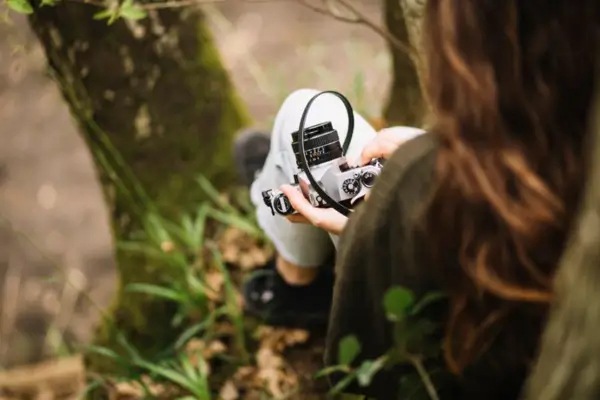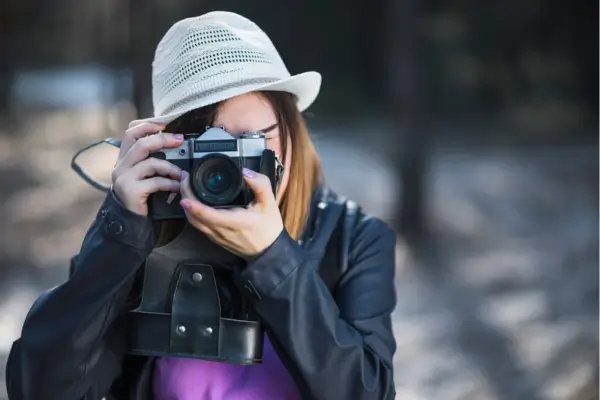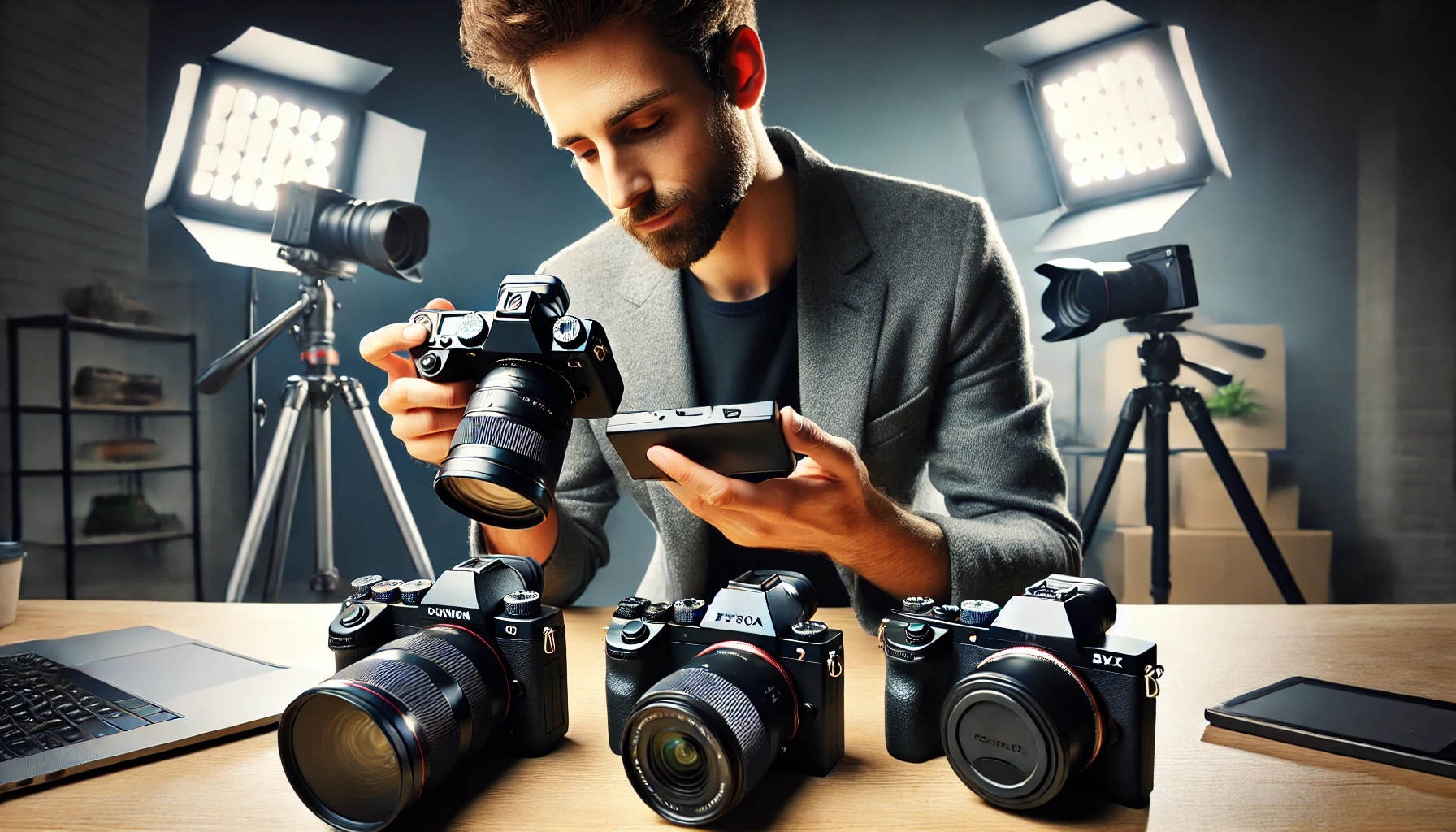Choosing the right camera can be overwhelming, especially with so many options available on the market. Whether you’re an aspiring photographer, a seasoned professional, or simply someone who wants to capture everyday moments, selecting the best camera for your needs is crucial. The right choice can significantly impact the quality of your photos, ease of use, and even your overall photography experience.
There are three main types of cameras that dominate the market today: DSLR, Mirrorless, and Compact (Point-and-Shoot). Each comes with its own advantages and limitations, making them suitable for different users and purposes.
In this guide, we’ll break down the key differences between these camera types, compare their strengths and weaknesses, and help you determine which one is the best fit for your needs and budget. Whether you’re looking for professional-grade quality, a lightweight travel-friendly option, or an easy-to-use camera for casual photography, this article will help you make an informed decision.
Understanding the Basics of Each Camera Type
DSLR (Digital Single-Lens Reflex)
DSLR cameras have been the go-to choice for professional and enthusiast photographers for years. They operate using a mirror mechanism that reflects light from the lens into an optical viewfinder. When the shutter button is pressed, the mirror flips up, allowing light to hit the image sensor and capture the photo. This mirror-based system is what distinguishes DSLRs from mirrorless cameras.
Pros of DSLR Cameras:
- Superior Image Quality – Large sensors and high-quality lenses contribute to sharp, detailed images with excellent dynamic range.
- Extensive Lens Selection – DSLRs have access to a vast range of lenses, from wide-angle to telephoto, making them highly versatile.
- Long Battery Life – Since DSLRs rely on an optical viewfinder rather than an electronic screen, they consume less power, allowing for longer shooting sessions.
Cons of DSLR Cameras:
- Bulky and Heavy – Due to the mirror mechanism and large body, DSLRs can be cumbersome to carry around, especially for travel photography.
- Steep Learning Curve – Beginners may find DSLRs overwhelming due to the extensive manual controls and settings.
Mirrorless Cameras
As the name suggests, mirrorless cameras lack the mirror mechanism found in DSLRs. Instead, they use an electronic viewfinder or LCD screen to display the image directly from the sensor. This technology makes them more compact while still offering high image quality and advanced features.
Pros of Mirrorless Cameras:
- Compact and Lightweight – Without a mirror and optical viewfinder, mirrorless cameras are significantly smaller and easier to carry.
- Fast Autofocus – Many mirrorless cameras feature advanced autofocus systems with real-time tracking and eye detection, making them ideal for action photography.
- Advanced Features – Mirrorless models often come with cutting-edge technology like in-body image stabilization (IBIS), 4K video, and high-speed shooting modes.
Cons of Mirrorless Cameras:
- Shorter Battery Life – Because they rely on electronic displays and viewfinders, mirrorless cameras consume more power than DSLRs.
- Limited Lens Selection – While the market is expanding, some mirrorless systems still have fewer lens options compared to DSLRs, especially in budget-friendly categories.
Compact Cameras (Point-and-Shoot)
Compact cameras, commonly known as point-and-shoot cameras, are designed for casual photographers who prefer a simple, portable device. These cameras feature a fixed lens and automated settings, making them easy to use without needing extensive photography knowledge.
Pros of Compact Cameras:
- Lightweight and Portable – Their small size makes them ideal for travelers and everyday photography.
- Easy to Use – With automatic settings, users don’t need to worry about adjusting exposure, focus, or shutter speed.
- Affordable – Compared to DSLRs and mirrorless cameras, compact cameras are budget-friendly while still delivering decent image quality.
Cons of Compact Cameras:
- Limited Manual Control – Most compact cameras lack manual settings, restricting creative flexibility.
- Smaller Sensors – Due to their small sensor size, compact cameras struggle in low-light conditions and don’t offer the same level of detail as DSLRs or mirrorless cameras.
- Less Versatility – With a fixed lens, users are limited in terms of zoom range and focal length options.
Each camera type has its advantages and drawbacks, making it essential to choose based on your specific needs. Whether you prioritize image quality, portability, or ease of use, understanding these differences will help you make an informed decision when selecting the right camera for your photography journey.

Key Factors to Consider When Choosing a Camera
Selecting the right camera involves more than just picking the latest model. To make an informed decision, you should consider several key factors that align with your needs, budget, and usage preferences. Here are the most important aspects to evaluate:
Purpose of Use
The first step in choosing the right camera is identifying what you will primarily use it for. Different types of photography and videography require specific features:
- Casual Photography: If you want a camera for everyday use, such as family photos, vacations, or events, a compact or entry-level mirrorless camera is a great choice due to its simplicity and portability.
- Professional Work: For photographers working in portraits, landscapes, or commercial photography, a high-end DSLR or mirrorless camera with a large sensor and interchangeable lenses provides the best image quality and flexibility.
- Travel Photography: A lightweight and compact camera with excellent image quality is ideal. Mirrorless cameras strike a great balance between portability and performance.
- Vlogging & Content Creation: If you’re creating content for social media or YouTube, look for a camera with a flip screen, excellent autofocus, and good video stabilization. Mirrorless cameras and some advanced compact cameras are popular choices among vloggers.
Budget
Your budget plays a crucial role in your camera selection. Here’s a general breakdown of camera price ranges:
- Entry-Level (Under $500): Compact cameras and some budget mirrorless models. Great for beginners.
- Mid-Range ($500 – $1,500): Higher-end mirrorless and entry-level DSLRs with good lenses.
- High-End ($1,500+): Professional-grade DSLRs and full-frame mirrorless cameras with top-tier lenses and features.
Portability and Weight
If you need a travel-friendly camera, portability is essential:
- Compact Cameras: Extremely lightweight, pocket-sized, and easy to carry.
- Mirrorless Cameras: A balance between portability and professional performance.
- DSLRs: Bulkier and heavier but offer superior handling and lens versatility.
Image and Video Quality
When evaluating a camera’s performance, consider these aspects:
- Megapixels: More megapixels mean higher resolution, but sensor size matters more.
- Sensor Size: Larger sensors (full-frame, APS-C) offer better low-light performance and dynamic range.
- Low-Light Performance: Cameras with larger sensors and lower aperture lenses perform better in low-light conditions.
Interchangeable Lenses
- DSLR & Mirrorless Cameras: Offer flexibility to change lenses for different shooting scenarios.
- Compact Cameras: Have fixed lenses, which limit versatility but simplify operation.
Battery Life
If you need a camera for long shooting sessions, consider battery life:
- DSLRs: Typically have the longest battery life due to their optical viewfinder.
- Mirrorless Cameras: Consume more battery as they rely on electronic viewfinders and LCD screens.
- Compact Cameras: Vary but generally have moderate battery performance.
Additional Features
Modern cameras come with a variety of extra features that enhance usability:
- Wi-Fi & Bluetooth: Enables easy photo transfer and remote control.
- 4K Video Recording: Essential for high-quality video content.
- Weather Sealing: Protects against dust and moisture for outdoor shooting.
- Touchscreen & Articulating Screens: Useful for vlogging and creative angles.
- In-Body Image Stabilization (IBIS): Helps reduce blur in handheld shots and videos.
By considering these key factors, you can find the perfect camera that meets your needs and enhances your photography or videography experience.

Best Camera Recommendations for Different Users
Choosing the right camera depends on your needs, experience level, and the type of photography or videography you plan to pursue. Below are recommendations tailored to different users, from beginners to professionals.
For Beginners: Affordable, Easy-to-Use Options
If you’re new to photography, you need a camera that is simple to use but still delivers great image quality. Beginner-friendly cameras often feature automatic settings, intuitive menus, and lightweight designs.
✅ Top Picks for Beginners:
- Canon EOS Rebel T7 / 2000D (DSLR) – An affordable entry-level DSLR with a user-friendly interface and good image quality.
- Sony ZV-1 (Compact) – A great option for beginners who want high-quality photos and videos without dealing with interchangeable lenses.
- Fujifilm X-T200 (Mirrorless) – A stylish, lightweight camera with great color science and easy-to-use controls.
🔹 What to Look For: Easy controls, built-in guides, affordability, and decent autofocus.
For Travel Photographers: Lightweight, Good Battery Life, Versatile Lens Options
Travel photographers need a camera that balances portability with performance. A lightweight design, good battery life, and versatile lenses are key for capturing stunning landscapes, street photography, and spontaneous moments.
✅ Top Picks for Travel Photography:
- Sony Alpha a6400 (Mirrorless) – Compact, excellent autofocus, and great low-light performance.
- Canon PowerShot G5 X Mark II (Compact) – A powerful point-and-shoot camera with a retractable electronic viewfinder, ideal for travel.
- Nikon Z50 (Mirrorless) – Small and lightweight with great image quality and interchangeable lens options.
🔹 What to Look For: Compact size, long battery life, weather sealing (if shooting outdoors), and excellent image stabilization.
For Content Creators & Vloggers: Flip Screen, Good Autofocus, 4K Video
If you create content for YouTube, TikTok, or Instagram, you need a camera with strong video capabilities, fast autofocus, and a flip screen for self-recording. Built-in stabilization is also a plus.
✅ Top Picks for Content Creation & Vlogging:
- Sony ZV-E10 (Mirrorless) – Designed specifically for vloggers, with a flip screen, real-time eye autofocus, and 4K video.
- Canon EOS M50 Mark II (Mirrorless) – Popular among content creators, featuring great autofocus and a vari-angle touchscreen.
- GoPro Hero12 Black (Compact Action Camera) – Ideal for adventure vlogs with waterproofing and excellent stabilization.
🔹 What to Look For: Flip-out screen, excellent autofocus, 4K video recording, and good audio input options.
For Professionals: Full-Frame Sensors, High Dynamic Range, Premium Lenses
Professional photographers and videographers require cameras with top-tier image quality, excellent dynamic range, and advanced features like dual card slots and robust lens selections.
✅ Top Picks for Professionals:
- Sony A7 IV (Mirrorless) – A hybrid powerhouse for both photo and video, featuring a full-frame sensor and 10-bit 4K video.
- Canon EOS R5 (Mirrorless) – High-resolution 45MP sensor, 8K video, and incredible autofocus.
- Nikon D850 (DSLR) – A workhorse DSLR with a 45.7MP sensor and fantastic dynamic range for landscape and portrait photography.
🔹 What to Look For: Full-frame sensor, excellent low-light performance, high megapixel count, and premium lens compatibility.
Whether you’re just starting or looking for a high-end professional setup, there’s a camera that fits your needs. Beginners should prioritize ease of use, travel photographers should consider portability, content creators need strong video features, and professionals require top-tier performance.
💡 Which camera do you use, or which one are you considering? Let us know in the comments!

Pros and Cons Comparison Table
Choosing the right camera can be overwhelming, especially with the variety of options available. To simplify your decision, here’s a side-by-side comparison of DSLR, Mirrorless, and Compact cameras. This table highlights their key strengths and weaknesses, helping you find the best fit for your photography needs.
Camera Type Comparison: Pros and Cons
| Feature | DSLR | Mirrorless | Compact |
|---|---|---|---|
| Image Quality | Excellent (large sensors, high dynamic range) | Excellent (similar sensors to DSLRs) | Decent (smaller sensors, lower quality in low light) |
| Size & Weight | Bulky and heavy | Compact and lightweight | Very compact, pocket-sized |
| Autofocus Speed | Slower in live view mode | Fast and accurate | Moderate (depends on model) |
| Lens Options | Wide variety (many professional-grade lenses) | Growing selection, but fewer than DSLR | Fixed lens (no interchangeability) |
| Battery Life | Long-lasting (optical viewfinder uses less power) | Shorter (EVF and LCD consume more battery) | Generally long (no EVF, optimized power usage) |
| Ease of Use | Steeper learning curve | Easier than DSLR but still requires knowledge | Very easy (point-and-shoot functionality) |
| Video Capabilities | High quality, but less optimized for video | Excellent (better autofocus, 4K and beyond) | Basic (some offer 4K, but limited manual controls) |
| Price Range | Mid to high (entry-level to professional) | Mid to high (similar to DSLR but varies) | Low to mid (budget-friendly options) |
| Ideal For | Professional and enthusiast photographers | Hybrid shooters, vloggers, travel photographers | Casual users, travelers, beginners |
Which Camera Should You Choose?
- If you prioritize image quality, lens versatility, and long battery life, a DSLR is a solid choice.
- If you want advanced features in a compact body with great video capabilities, a Mirrorless camera is ideal.
- If you need an easy-to-use, portable, and budget-friendly option, a Compact camera is your best bet.
Each camera type has its strengths, so the right choice depends on your needs and shooting style. Are you still unsure? Let us know in the comments, and we’ll help you find the perfect camera for you!
Conclusion
Choosing the right camera depends on your specific needs, experience level, and intended use. Let’s quickly recap the key differences and benefits of each camera type:
- DSLR Cameras offer exceptional image quality, a wide selection of lenses, and long battery life, making them ideal for professionals and photography enthusiasts. However, they tend to be bulkier and require a learning curve.
- Mirrorless Cameras provide a great balance of portability and performance, with fast autofocus and advanced features. They are perfect for travelers, content creators, and those who want high-quality images without the bulk of a DSLR.
- Compact Cameras are lightweight, easy to use, and great for casual photographers or those who need a simple, hassle-free option for everyday photography. However, they lack the manual controls and sensor size of the other two types.
Ultimately, the best camera is the one that fits your needs, budget, and shooting style. If you prioritize portability and convenience, a mirrorless or compact camera might be the right choice. If you’re aiming for professional-grade photos and versatility, a DSLR could be your best bet.
What about you? Which type of camera do you prefer, and why? Share your thoughts in the comments below, or ask any questions if you need help deciding! We’d love to hear about your photography journey. 📸✨
